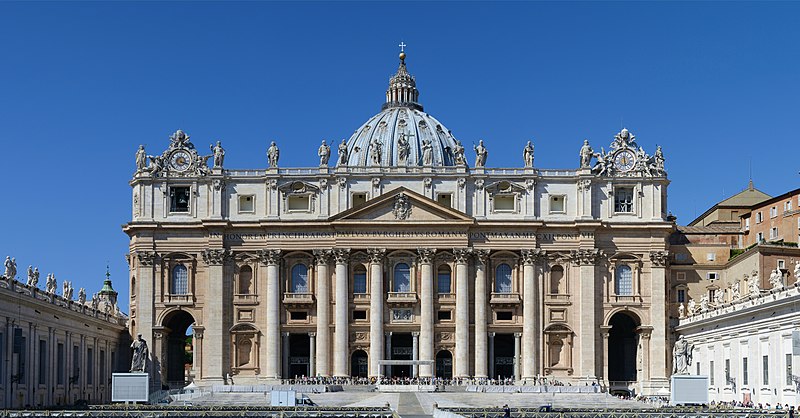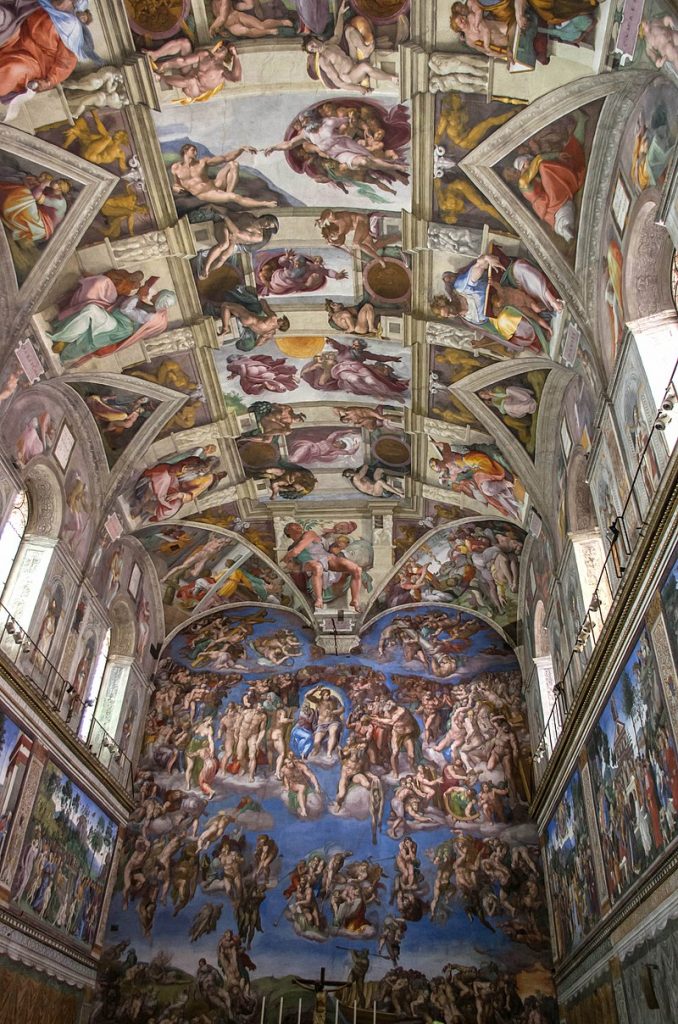
Main façade and dome of St. Peter’s Basilica, seen from St. Peter’s Square
St. Peter’s Basilica, located in Vatican City, Rome, is one of the most renowned and significant architectural landmarks in the world. Its grandeur and historical significance make it an iconic representation of Renaissance and Baroque architecture. Here is a brief discussion of the architecture of St. Peter’s Basilica:
- Overall Design: St. Peter’s Basilica was designed primarily by Donato Bramante, Michelangelo, Carlo Maderno, and Gian Lorenzo Bernini. It is a massive church that follows a Latin cross plan with a central nave and four smaller aisles. The basilica covers an area of 21,095 square meters (227,060 square feet) and has a capacity to accommodate over 60,000 people.
- Facade: The magnificent facade of St. Peter’s Basilica is characterized by its grandeur and classical design. It was completed in 1614 by Carlo Maderno. The facade features Corinthian columns, colossal statues, and intricate details. The central part of the facade is dominated by a large balcony, known as the Loggia of Benedictions, from where the Pope delivers blessings.
- Dome: One of the most striking features of St. Peter’s Basilica is its majestic dome, which was designed by Michelangelo. The dome rises to a height of approximately 136 meters (446 feet) and is one of the largest domes in the world. Its design combines Renaissance and Baroque elements and is considered a masterpiece of engineering. The interior of the dome is adorned with stunning mosaics depicting scenes from the Bible.
- Interior: The interior of St. Peter’s Basilica is vast and opulent. The central nave is flanked by marble columns and decorated with numerous statues and artworks. The main altar, called the Baldachin, was designed by Bernini and is made of bronze. The basilica houses numerous chapels, including the famous Michelangelo’s Pietà, which is located to the right of the entrance.
- Bernini’s Colonnade: Surrounding the square in front of St. Peter’s Basilica is Bernini’s colonnade, which consists of two curved rows of columns. The colonnade embraces visitors as they enter the square and symbolizes the welcoming arms of the Catholic Church. It is adorned with statues of saints atop the columns, creating an impressive visual effect.
- Vatican Grottoes: Beneath St. Peter’s Basilica, there are the Vatican Grottoes, which house the tombs of numerous popes, including Saint Peter, the first pope. The grottoes can be visited by the public and serve as a significant pilgrimage site for Catholics.
The architecture of St. Peter’s Basilica showcases the skill, creativity, and grandeur of the architects and artists involved in its construction. Its harmonious blend of Renaissance and Baroque styles, along with its monumental dome, intricate details, and vast interior, make it an awe-inspiring masterpiece and an enduring symbol of the Catholic Church.

